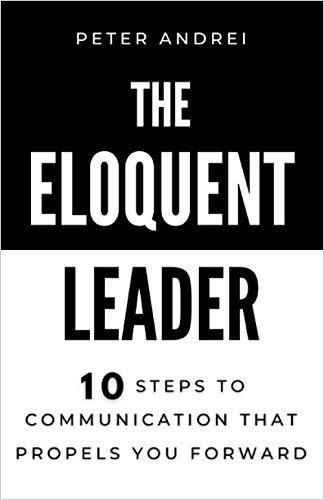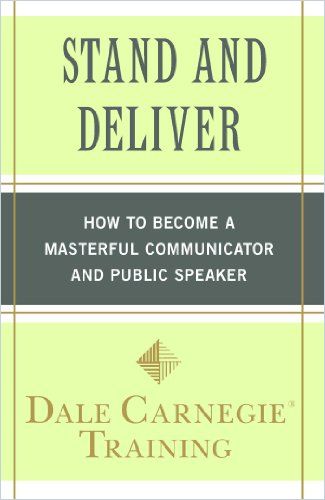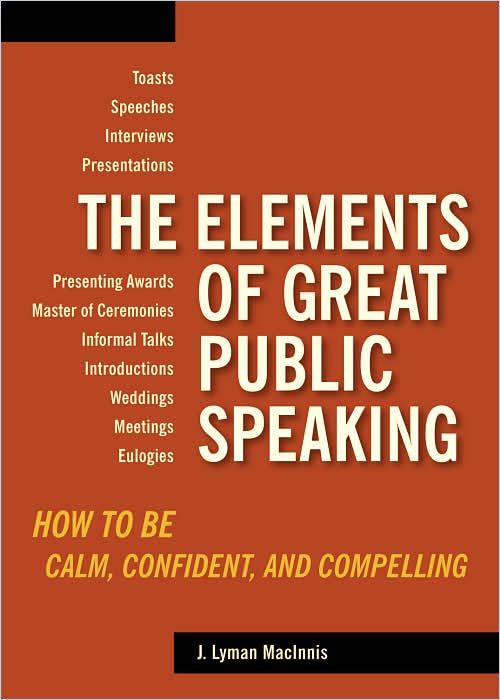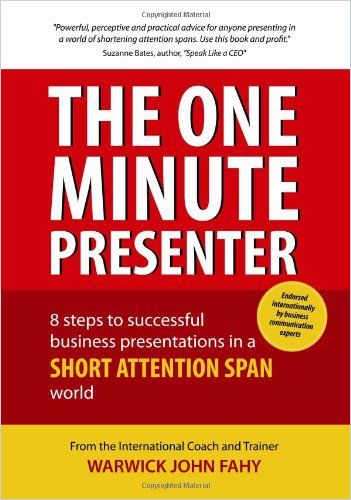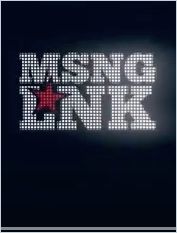Public Speaking for Maximum Impact

Delivering noteworthy and affecting presentations is a necessary skill for business success. Every talk is unique and different speakers find themselves speaking to different audiences on different subjects. But some core tenets of effective public speaking apply to all situations. Listen to what top presentation coaches have to say about improving your communication style and impact.
Content Is Still King
Graham Shaw explains in The Speaker’s Coach that content is still your most important consideration. The best way to guide your preparation is to continually ask yourself “what’s in it” for your audience.
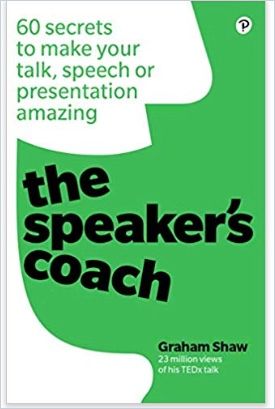
Become an expert in the subject of your speech. This gives you confidence and, in turn, inspires confidence in you. Shaw breaks giving a powerful presentation into three main parts: prep, practice and presentation, and gives loads of actionable advice in his book. He recommends watching TED Talks to see a variety of top-notch presentation styles.
Often, speakers are in fear of the audience and it can feel like a ‘you versus them’ scenario. However, when you have a helpful mind-set, it can positively influence people to support you.
Graham Shaw
Points for Style
TED Talks are perhaps the gold standard for presentations. Despite the nearly infinite variety of topics and presenters, author Jeremey Donovan manages to distill their essence to a few salient points. In How to Deliver a TED Talk, Donovan suggests focusing on sowing just “a single seed of inspiration” in an unforgettable “single unifying message.”
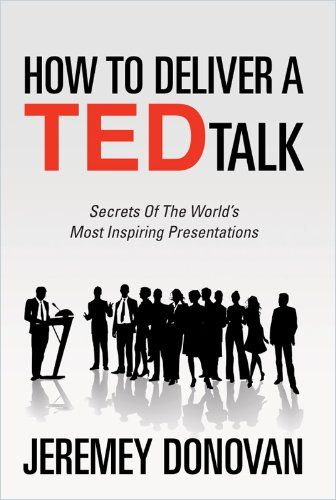
Envision the end of your talk and how you want your audience to feel. Open by sharing a personal story related to your talk’s message where someone else is the hero. Segment your speech, no matter how long, into three parts. Devise a memorable, short catchphrase that sums up your conclusion. Boost your confidence before you go on with these tips from social psychologist Amy Cuddy:
Tell the audience what you are going to tell them; tell them; and then tell them what you told them.
Jeremey Donovan
You draw people into your talk by paying attention to and aligning with your audience psychologically and taking them on a journey. Steve Jobs was brilliant at this, according to Carmine Gallo in The Presentation Secrets of Steve Jobs. Jobs set out to deliver memorable experiences in his presentations. Like TED presenters, he stuck with just one main idea – or in his case, product – but it was always a doozy. Figure out the main question you want to answer for your audience.
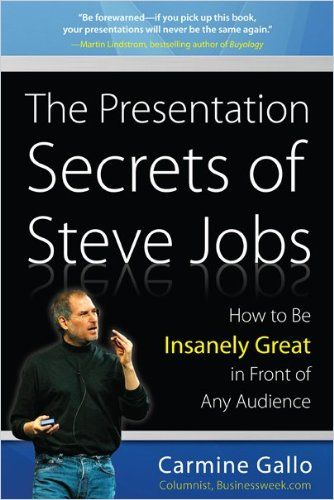
Gallo warns against using business jargon in your presentations. Jobs worked to create a startling moment that made his presentations unforgettable.
If you are passionate about your topic, you’re 80% closer to developing the magnetism that Jobs has.
Carmine Gallo
While Graham Shaw warns against improvising for fear you signal to the audience you’re unprepared, improvisation veteran turned communications coach Karen Hough says the opposite in Be the Best Bad Presenter Ever.
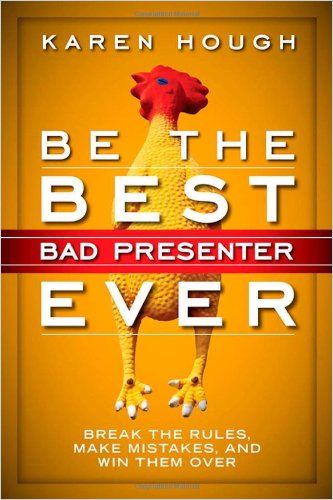
According to Hough, imperfections in your style convey authenticity and credibility. She counsels speakers to loosen up before presentations and to take all the rules about public speaking with a grain of salt. Don’t be afraid to convey your passion, it adds to the power of your presentation. Try instead to be your authentic self. Remember, your audience wants you to succeed.
Be human, be you, make mistakes!
Karen Hough
Your Body Also Tells a Story
In You Were Born to Speak, speech expert Richard Newman counsels public speakers to keep three things in mind before delivering a presentation:
- “What do I want people to know?”
- “What do I want them to do?”
- “How do I need these people to feel?”
But pay attention to your body language as well, because your body communicates to the audience too, and you don’t want it to contradict your words.
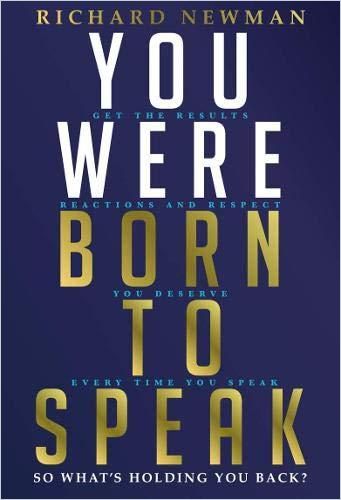
Stand with your feet shoulder-width apart to center yourself and evenly distribute your weight. Think about your main points and align your movements with them. Comedians move seemingly at random around the stage to build excitement, but they stand still to deliver a punchline. You should also stand still when delivering a line you hope has impact. A properly aligned body will also help your voice sound warmer and more relaxed. Most importantly, as you get more accustomed to public speaking, your movements will become more natural.
If you free yourself and stay true to who you were born to be, then you will inspire others to follow. This takes courage, but I believe it is the only way for you to feel fully alive.
Richard Newman
Newman advocates using “5552 breathing” ahead of talks – exhale all the air from your lungs, then inhale to a count of five, hold for a count of five, exhale for a count of five and hold again for a count of two. This will calm you and get you into “peak state” before your presentation. Anxiety shuts your brain down, so it’s helpful to have a routine like deep breathing or chatting with audience members before your talk. Learn how Newman’s body language tips translate to virtual presentations in his Journal interview with Sara Kupfer:
In “How to Speak So That People Want to Listen,” communications expert Julian Treasure celebrates the human voice as a uniquely powerful sound in the world. Consider how your timbre, pace, volume and pitch may add to or subtract from the impact of your words.
Tell A Good Story (or Two)
In Simply Said, communications consultant Jay Sullivan emphasizes telling a story. Stories speak directly to the emotional mind of your listeners and help them better remember your talk. Stories, by definition, need a beginning, middle and end. Do not sound like your story is rehearsed, but of course, do rehearse telling it. Stay loose by memorizing the opening and ending lines and generally knowing how the story goes.
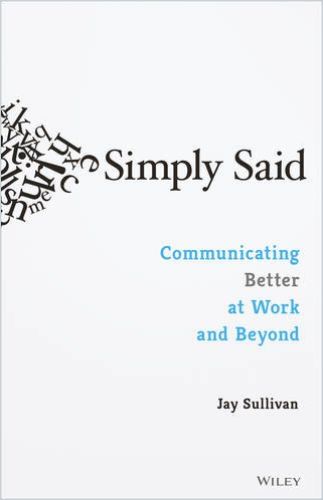
If you can’t easily pull off humor, don’t attempt it. If you don’t think you can effectively tell a story either, substitute in an analogy or metaphor instead. Sullivan tells the story of a communications professional talking senior executives into giving media interviews by comparing them to “closers” in a baseball game. Yes, there was risk involved, but without the attempt, they would lose the game altogether. Delve deeper into storytelling in this Journal article:
We need to know our data so we can back up the claims in our stories, but it’s the stories that engage people.
Jay Sullivan
ABC – Always Be Communicating
In The Presentation Coach, author Graham Davies makes the point that, whether you’re aware of it or not, you are always presenting – trying to persuade others – informally or formally. He advocates a suite of techniques he calls the “Bare Knuckle Method” because, as he sees it, you’re always in a fight for attention, so you should be prepared. He sets out a precise “preparation pipeline” to guide you in planning your presentations and to get crystal clear about the message you send.
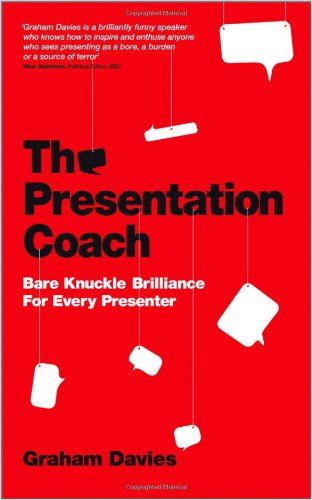
In The Power Presenter, coach Jerry Weissman advises speakers to take in the nonverbal feedback their audiences give them. Are they nodding in agreement? Then they’re following your points. Is there a puzzled look on their faces? Then you need to clarify. Weissman has great technical tips for presenting with slides, but cautions speakers to not let visual aids dominate your talk.
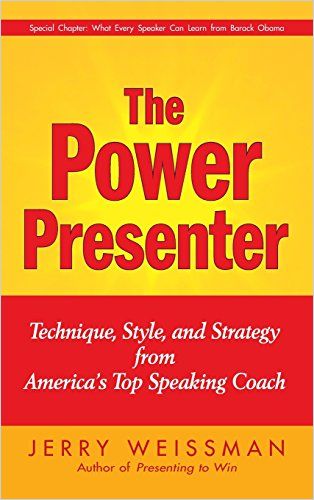
Graham Shaw believes the right visuals can add life to your presentation and help you better engage audience attention. Richard Newman says to be careful how you integrate images. You don’t want your audience reading slides when they should be paying attention to you. You’re better off without slides, but if you do use them, pause to look at the slide yourself, to direct your listeners’ attention.
There is not one approach to public speaking, and, in fact, there are many ways that work equally well. Every speaker is different and every talk is different.
Graham Shaw
If you stay for a question and answer period, rest assured no one presumes you know the answers to all questions. You’ll do just fine so long as you know your talk’s content. First, listen to the question. Think before you answer and refer back to the main points of your talk.
Read more about the art of persuasive speaking:




